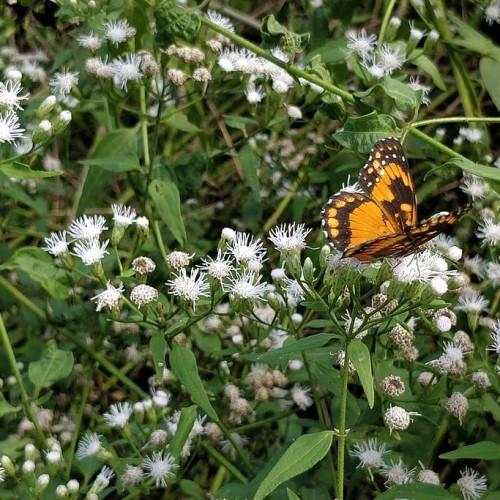
American boneset
Eupatorium perfoliatum 'Milk and Cookies'
Cycle:
Herbaceous Perennial
Watering:
Frequent
Hardiness Zone:
3 - 8
Flowers:
Flowers
Sun:
Full sun Partial sun
Soil:
Sandy,Loamy,Clay,Humus
Fruits:
Fruits Ready In Fall
Leaf:
Yes
Growth Rate:
Low
Maintenance:
Low
Drought Tolerant:
Yes
Care Level:
Moderate
watering
American boneset (Eupatorium perfoliatum 'Milk and Cookies') should be watered regularly, but not too much. Generally speaking, once a week should be sufficient. Make sure to check the soil each time before watering as the soil should be somewhat dry before watering. If the soil is still moist, wait a few days before watering again. In hot weather, check the soil more frequently as the plant may require more frequent watering. It is best to water in the morning as this allows time for the soil to dry out before nightfall. During the first few weeks, it is important to water the plant regularly to help it establish a healthy root system. After about 4 weeks, the plant should be well established and need less frequent waterings. Generally, American boneset (Eupatorium perfoliatum 'Milk and Cookies') prefers to be kept moist rather than wet. Make sure not to over water the plant as this can cause root rot.
sunlight
American boneset (Eupatorium perfoliatum 'Milk and Cookies') prefers full sunlight for most of the day, or at least 6 to 8 hours of direct sun exposure each day. The plant should be sheltered from wind, however, as it is sensitive to strong winds that can damage the stems and leaves. When the temperature is over 80 degrees Fahrenheit, it is recommended that the plant receive some small amount of shade in order to prevent sunburn on the leaves.
pruning
American Boneset (Eupatorium perfoliatum 'Milk and Cookies') should generally be pruned in late winter or early spring, before new growth begins. Pruning can range from light trimming to more extensive shaping. To promote bushiness, cut back individual stems to the desired height, pruning away up to 1-third of the total height. This should be done after flowering has finished for the season. Deadheading spent flowerheads or pruning away weak or damaged stems can also be done. Pruning should be done in the late winter or early spring season, to ensure that the plant gets enough time to regrow before the next flowering season.
